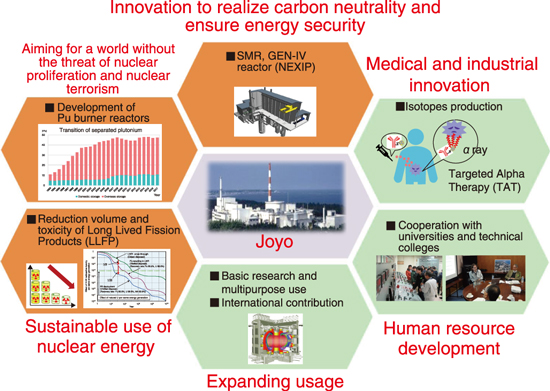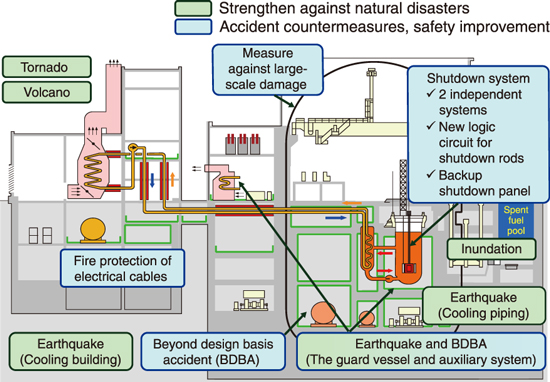
Fig.7-1 Role of the Experimental Fast Reactor Joyo as a Research Platform

Fig.7-2 Measurement to the new regulatory standards
Fast reactors and related nuclear fuel cycles offer a promising sustainable energy supply to meet the global energy demand while protecting the environment. Fast reactors can potentially supply energy for over 1000 years by using uranium resources more effectively than the traditional nuclear energy systems. Further, they can significantly reduce the exothermic heat and radiotoxicity of the vitrified bodies sent for geological disposal by transmuting the minor actinides (MAs) that have a long half-life.
The research and development (R&D) activities for fast reactors for the next decade were specified in the Strategic Roadmap presented by the National Inter-Ministerial Council for Nuclear Power in December 2018. According to this roadmap, backend actions related to the reprocessing or recycling of fast reactor technology are required to establish the significance of diversifying fast reactors. Moreover, international competitiveness should be maintained by continuing the R&D in nuclear power, human resource development, and research base while introducing cutting-edge technology domestically and internationally. Therefore, the JAEA formulated an R&D policy according to the Strategic Roadmap; the Sector of Fast Reactor and Advanced Reactor R&D (SEFARD) is now implementing an advanced integrated design evaluation method incorporating cutting-edge technologies in Japan and overseas, safety improvement technology, technology to reduce the volume and toxicity of radioactive waste, cost-effective fast reactor technology, fuel cycle technology (such as fuel fabrication and reprocessing), and the development/standardization of safety criteria, codes, and standards. Research on the reduction of the volume and toxicity of radioactive waste has been underway at the experimental fast reactor Joyo at Oarai Research Institute. Furthermore, in response to the strategic roadmap, the JAEA plans to expand the use of Joyo as a research platform in the fields shown in Fig.7-1. In particular, we plan to focus on producing medical radioisotopes, which have high expectations domestically and internationally. Based on these needs, measures according to the new regulatory standards shown in Fig.7-2 are implemented to restart the Joyo as soon as possible.
A fast simulation method for chemically reacting flows was developed (Topic 7-1). This method can also reduce the calculation time of numerical analysis and facilitate the exploration of various new steam generator designs for developing innovative reactors.
A new experimental device was developed to visualize the sodium aerosol transfer behavior (Topic 7-2). The aerosol transport behavior and the distribution data of sedimented aerosols in cells were obtained. This result is expected to be helpful to elucidate the transport behavior of sodium fire aerosol for validating the evaluation method in the future.
A new evaluation method was developed to predict the creep-fatigue life (Topic 7-3). The predicted results obtained by the new method estimated the number of cycles corresponding to the crack initiation in creep-fatigue tests with good accuracy. These results are expected to provide a reference to improve the design procedure.
A new experimental method was developed to obtain oxygen self-diffusion coefficients of stoichiometric MOX fuels (Topic 7-4). It is possible to predict the time required for sintering and redox reactions of the MOX fuel and the time variation of oxygen retribution during irradiation.
The measurements revealed the correlation between the thermal conductivity of Am-MOX and the Am content. An equation was derived to calculate the effect of Am content on the thermal conductivity of MOX fuels. This will contribute to the design technology for determining the fuel core temperature (Topic 7-5).
Thermal contraction of CRDS was considered in the reactivity measurement. In the present study, the discrepancy between the calculation and experiment was successfully eliminated, and the experimental data are acceptable as validation data (Topic 7-6).
An evaluation method for the O/M ratio from Am and Np contents, temperature, and oxygen partial pressure was formulated. This method will contribute to improving the fuel design (Topic 7-7).